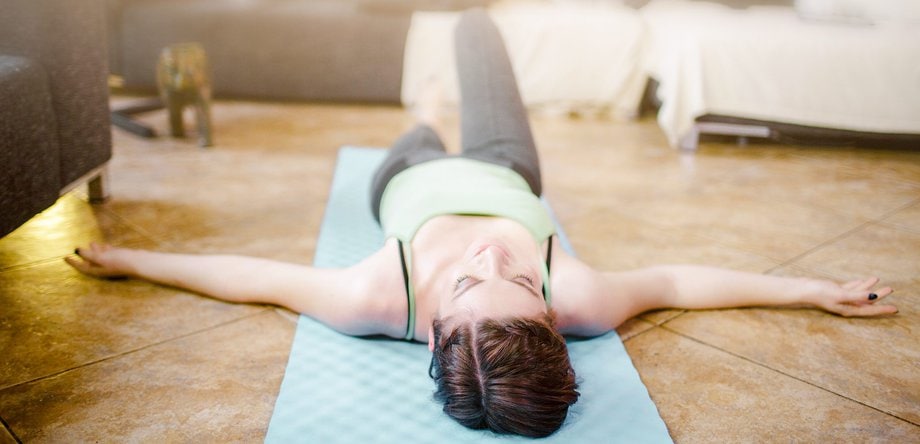Progressive Muscle Relaxation and Pain Relief: Techniques and Insights

Are you looking for effective techniques to relieve pain? Look no further than progressive muscle relaxation.
In this article, we will guide you step-by-step on how to practice this powerful method. By understanding the science behind it, you’ll discover the connection between muscle tension and pain.
Not only does progressive muscle relaxation offer relief, but it also brings a range of benefits. Plus, we’ll share tips and tricks to maximize the effectiveness of these techniques.
Get ready to experience a new level of pain relief.
Key Takeaways
- Engaging in progressive muscle relaxation helps release tension and promote relaxation throughout the entire body.
- Progressive muscle relaxation effectively reduces muscle tension and anxiety.
- It is particularly helpful for managing chronic pain conditions like fibromyalgia and tension headaches.
- Regular practice of progressive muscle relaxation improves the ability to relax muscles and experience the benefits of this technique.
The Science Behind Progressive Muscle Relaxation
The science behind progressive muscle relaxation shows how it can provide pain relief. When you engage in progressive muscle relaxation, you actively tense and relax different muscle groups in your body. This technique helps to release tension and promote relaxation throughout your entire body.
By deliberately tensing and then relaxing your muscles, you can increase your awareness of the physical sensations in your body and learn to recognize the difference between tension and relaxation. Studies have shown that progressive muscle relaxation is an effective method for reducing muscle tension and anxiety.
It has been found to be particularly helpful in managing chronic pain conditions such as fibromyalgia and tension headaches. So, by practicing progressive muscle relaxation, you can experience both muscle relaxation and anxiety relief.
Step-by-Step Guide to Practicing Progressive Muscle Relaxation
Start by finding a quiet and comfortable space where you can fully focus on practicing the step-by-step guide to progressive muscle relaxation.
To begin, sit or lie down in a relaxed position. Take a deep breath in, and as you exhale, let go of any tension in your body.
Now, start with your feet and slowly tense the muscles, holding for a few seconds before releasing. Move up to your calves, thighs, and so on, repeating the process for each muscle group.
Focus on the sensation of tension and relaxation, allowing yourself to fully experience the muscle relaxation process.
Take your time and go at your own pace. With regular practice, you will become more skilled at relaxing your muscles and experiencing the benefits of this technique.
Understanding the Connection Between Muscle Tension and Pain
Understanding how muscle tension and pain are connected can provide valuable insights into managing discomfort. When your muscles are tense, it can lead to pain and discomfort in various parts of your body. By recognizing this connection, you can take steps to manage your muscle tension and alleviate your pain.
One effective way to address muscle tension is through relaxation techniques. These techniques involve consciously relaxing specific muscle groups in your body, which can help reduce tension and promote relaxation. Examples of relaxation techniques include deep breathing, meditation, and guided imagery.
By incorporating these techniques into your daily routine, you can actively manage your muscle tension and ultimately reduce pain and discomfort.
It is important to remember that muscle tension management is a continuous process, and finding the right relaxation techniques that work for you may require some trial and error.
Benefits of Progressive Muscle Relaxation for Pain Relief
Incorporating progressive muscle relaxation into your routine can help alleviate discomfort and reduce pain. This alternative pain relief method is based on the mind-body connection in pain management.
Here are four reasons why you should consider trying progressive muscle relaxation:
- It promotes relaxation: By consciously tensing and then relaxing different muscle groups in your body, you can release built-up tension and promote overall relaxation. This can help reduce physical and emotional stress, which often contribute to pain.
- It improves sleep quality: Progressive muscle relaxation has been shown to improve sleep quality by reducing muscle tension and promoting a sense of calm before bedtime. Better sleep can lead to improved pain management and overall well-being.
- It increases body awareness: This technique encourages you to pay attention to how your body feels, helping you develop a greater awareness of physical sensations. This increased body awareness can allow you to better identify and address areas of pain or discomfort.
- It empowers you: By incorporating progressive muscle relaxation into your routine, you take an active role in managing your pain. This sense of empowerment can have a positive impact on your overall well-being and mental health.
Tips and Tricks for Enhancing the Effectiveness of Progressive Muscle Relaxation Techniques
To enhance the effectiveness of your progressive muscle relaxation practice, try incorporating deep breathing exercises to promote further relaxation and reduce stress. Deep breathing helps activate the relaxation response in your body, which can enhance the benefits of progressive muscle relaxation.
By taking slow, deep breaths, you allow your body to take in more oxygen, which in turn helps to calm your mind and relax your muscles even more. This can be especially helpful if you find it challenging to fully relax or if you experience resistance to relaxation techniques.
Deep breathing can help you overcome any resistance you may have and allow you to fully reap the benefits of progressive muscle relaxation. So, take a few moments before you start your practice to focus on your breath and incorporate deep breathing exercises to enhance your relaxation experience.
Frequently Asked Questions
How Often Should Progressive Muscle Relaxation Be Practiced for Optimal Pain Relief?
To achieve optimal pain relief through progressive muscle relaxation, it’s important to practice regularly. The frequency of practice directly affects the effectiveness of this technique. Consistent practice will yield better results in managing and reducing pain.
Can Progressive Muscle Relaxation Be Used as a Standalone Technique or Should It Be Combined With Other Pain Management Strategies?
You should consider combining progressive muscle relaxation with other pain management strategies. This can enhance the efficacy of progressive muscle relaxation for acute pain relief.
Are There Any Potential Side Effects or Risks Associated With Practicing Progressive Muscle Relaxation?
There might be potential side effects or risks associated with practicing progressive muscle relaxation. It’s important to be aware of these and consult a healthcare professional if you have any concerns.
Can Progressive Muscle Relaxation Be Used to Relieve Chronic Pain Conditions, Such as Fibromyalgia or Arthritis?
Yes, progressive muscle relaxation can be effective in relieving chronic pain conditions like fibromyalgia or arthritis. It is a technique worth exploring in integrative pain management, but it also has limitations.
Is Progressive Muscle Relaxation Suitable for Everyone, or Are There Certain Individuals Who Should Avoid or Modify the Technique?
Progressive muscle relaxation may not be suitable for everyone. Considerations should be made for individuals with certain medical conditions or physical limitations. Modifications may be needed to ensure safety and effectiveness of the technique.









